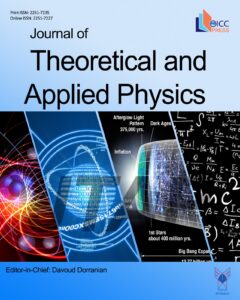Investigating the resonance in the palladium surface plasmon electrons for inverse – β reaction in electrolysis process
Authors
Abstract
The resonance effect happens in very number of natural oscillators and very important in a lot of phenomena. In the surface of a hydride metal, the resonance effect causes the kinetic energy of electrons is increased until they can cooperate inverse-β interaction. This reaction can be done in the electrolysis of palladium and platinum in water electrolyte. In this research, a new method for calculating the rate of inverse-β interaction is introduced. This method is based on the Feynman equations that is more understandable and simpler compared to other methods. The inverse-β interaction is created by high energy electrons. Surface electrons accelerate by resonance effect which it is produced by electrolysis process. The atomic electrons of metal behave as a forced oscillator with very small damping which cause the resonance effect. We will indicate this resonance effect is satisfied by the new equations. The theoretical results have good agreement with experimental results.



